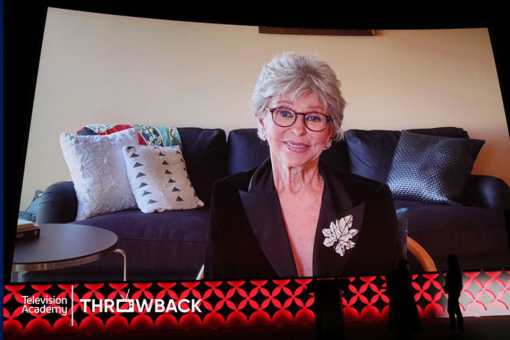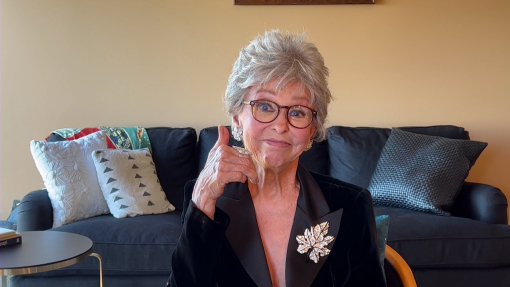"When television has fulfilled its ultimate destiny, man's sense of physical boundaries will be swept away and the boundaries of his sight and hearing will be the limits of the earth itself. With this may come a new horizon, a new philosophy, a new sense of freedom, and, greatest of all, perhaps a finer and broader understanding between all peoples of the world." — David Sarnoff
David Sarnoff's career, condensed to a story proposal, is the kind of tale that a network executive might summarily reject with this memo: "Too full of the blarney of the American dream, too fabulous, too rags to riches, too melodramatic. Nobody would believe it. Pass.”
Sarnoff's story begins on the mean streets of Manhattan's Lower East Side and ends in the president's suite on the fifty-third floor of the RCA Building in Rockefeller Center. It took him 24 years to trek uptown to the top. Along the way, he made radio happen; he made television happen. He pioneered the concept of the network and then made that happen. He envisioned the development of color television, nursed it through the decades, and eventually made that happen, too.
Born in the Russian village of Uzlian, he was nine when he arrived in the United States in 1900. He got a job hawking newspapers and for a while thought he might like to be a news reporter. But when his father died in 1906, leaving him as the family's main support, he quit the eighth grade and became a messenger for a small telegraph company — his first job in telecommunications. His next employer, Marconi Wireless, hired him as an office boy, then made him a wireless operator. It was an anonymous four-year stint that came to a spectacular finale.
On April 14, 1912, as he sat listening idly to the dots and dashes of the wireless from his tiny glass-enclosed telegraph station atop Wanamaker's department store in Manhattan, he suddenly picked up a startling message: "S.S. Titanic ran into an iceberg. Sinking fast.” The message had come from the S.S. Olympic, sailing near the Titanic in the North Atlantic, 1,400 miles from New York.
"Rush details," Sarnoff requested, "including names." Then he notified the newspapers, which in turn notified relatives of the passengers. He remained at his post for 72 hours, compiling and revising lists of the dead and the survivors. President Taft, fearing the presence of misleading radio signals, ordered all East Coast telegraph stations to close down in order to avoid interference with Sarnoff's transmissions. For three days, the headlines screamed each new detail of the unfolding drama, including Sarnoff's role in it. By the time the drama ended, the newspapers had made Sarnoff a tabloid hero.
Impressed, the Marconi bigwigs named him instructor of the company's trainee operators and inspector of all Marconi equipment on passenger ships. In 1915, he became assistant traffic manager for Marconi's New York operations.
In 1915, he wrote a memo that broadcast historians still like to quote: "I have in mind a plan of development that would make radio a 'household utility’ in the same sense as the piano or phonograph. The idea is to bring music into the home by wireless. ... The receiver can be designated in the form of a simple 'Radio Music Box' and arranged for several different wave lengths. ... The 'Radio Music Box' can be applied with amplifying tubes and a loudspeaker telephone, all of which can be neatly mounted in one box."
The man to whom the memo was addressed — Marconi Vice President Edward J. Nally — dismissed the music box idea as harebrained. Five years later, however, when the company was reorganized under RCA, Sarnoff, now commercial manager of the new corporation, resubmitted his idea — and this time he got $2,000 to develop a prototype of his music box.
At about the same time, broadcasting studios were beginning to appear in such cities as Pittsburgh (KDKA), Newark (WJZ), and Chicago (KYW), and all were owned by Westinghouse. Radio, which had begun as the whim of a few amateurs with crystal sets, was turning into a national craze, and Westinghouse was leading the way. This development compelled the old guard at RCA to abruptly reorder its corporate priorities. Broadcasting, as well as the manufacture and distribution of Sarnoff’s newfangled music boxes, became the company's number one goal.
In 1921, Sarnoff was promoted once again — this time to general manager of RCA.
With the broadcasting era barely launched and RCA's radio sets taking off, Sarnoff urged his board of directors to imagine the future:
I believe that television, which is the technical name for seeing as well as hearing by radio, will come to pass in due course. ... I also believe that transmission and reception of motion pictures by radio will be worked out in the next decade. This would result in important events or interesting dramatic presentations being literally broadcast by radio and, thereafter, received in individual homes or auditoriums where the original scene will be re-enacted on a screen, with much the appearance of present-day motion pictures.
Sarnoff pushed television at every opportunity and became, in the words of one observer, "America's chief salesman of the potentials of a television service." At a time when television was a fantasy of our science-fiction literature, Sarnoff, speaking before the Chicago Association of Commerce in 1927, declared the fantasy to be "an accomplished fact" — as indeed it was, in various experimental demonstrations.
Yet even as it existed experimentally — a black-and-white laboratory curiosity awaiting electronic embellishment — Sarnoff saw the next step: "If we let our imaginations plunge ahead," he declared in 1927, "we may also dream of television in faithful colors."
Color television, however, was a dream that Sarnoff would defer for a few decades. In the mid-twenties, he had a more immediate concern — the continued marketing of radios. In 1925, he jotted this memo to himself: "Put all stations into a broadcasting company which can be made self-supporting and probably revenue-producing, the telephone company to furnish wires as needed."
In January 1926, the RCA board of directors approved Sarnoff's proposal to create the new company to provide quality nationwide programming that would in turn stimulate RCA radio sales. Thus, a new subsidiary, the National Broadcasting Company, was born, bringing with it concert broadcasts (Ampico Hour), adaptations of classics (Eveready Hour), and comedies (Amos 'n' Andy). Sponsors flocked to the new medium, NBC prospered, and RCA radios sold.
Radio was hot, but television was in its earliest stages of development. Despite the development (by Vladimir Zworykin) of an electronic scanning system — a television camera tube that would become the basis of modern picture transmissions — the state of the art had proceeded at a snail's pace through the twenties. But in 1930, the year he was named RCA president, Sarnoff turned his concentrated attention to television. His goal: to perfect the medium that would be, he predicted, "the ultimate and greatest step in mass communications."
RCA's search for television was on. Sarnoff proceeded to coordinate the efforts of RCA's personnel — its engineers, technicians, scientists, and executives —toward this single corporate goal, and he went to the RCA board of directors to obtain the appropriations necessary to keep those efforts moving forward.
By 1931, after numerous experiments, RCA had constructed a 2.5-kilowatt television station atop the Empire State Building. In 1932, the RCA engineers oversaw the nation's first experimental broadcast of an all-electronic television system. In 1936, RCA began construction on a sophisticated transmitting station. A limited number of television sets were soon produced, and an experimental program service developed.
Research continued for the next three years. Finally, by 1939, Sarnoff felt that RCA was ready to go public with its "art." On the afternoon of April 30, 1939, at the dedication of the RCA Exhibit Building during the opening of the New York World's Fair, Sarnoff initiated the first regular television service in the United States. Standing before an NBC television camera, with hundreds of visitors watching on a nearby monitor, he declared: "Today we are on the eve of launching a new industry, based on imagination, on scientific research and accomplishment. ... Now we add radio sight to sound."
But during World War II, most commercial television activity ceased. Sarnoff, a colonel in the reserves, went into active duty and was promoted to brigadier general in 1944. Soon after the war, Sarnoff, elected RCA chairman and chief executive officer in 1947, had the NBC television network organized to promote the sale of RCA receivers, and it was in this period that television finally came into its own. Between 1949 and 1951, the year of the first coast-to-coast telecast, the purchases of television sets jumped from one million to more than ten million. And RCA accounted for nearly half of those sales.
By the 1950s, Sarnoff had approved the development of a color system, the RCA tricolor tube, that would be compatible with the existing black-and-white sets on the market. CBS, however, had developed an incompatible color system and sought the Federal Communications Commission's approval to market it. Yet, in the end, it was RCA's system that the FCC certified in 1953 as the basis for color television in the United States. Not long after that, Sarnoff began converting NBC-TV's programming to color to spur the sales of RCA's color sets.
After a telecommunications career that had spanned more than six decades, Sarnoff, cited in 1944 by the Television Broadcasters Association as the "Father of American Television," retired in 1970 and was elected honorary chairman of RCA. He died in 1971.
This tribute originally appeared in the Television Academy Hall of Fame program celebrating David Sarnoff’s induction in 1984.












